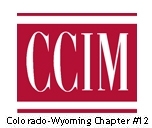MOBILITY
RTD, Uber and Masabi have launched the first-ever Uber transit-ticketing app, enabling Denver riders to be the first in the world to seamlessly buy tickets and ride transit. Uber riders in the metro area will now be able to buy RTD tickets through the Uber app and then use their phone to ride bus and train services. RTD’s relationship with Uber also allows transit users the ability to see and consider transit routes presented in the Uber app. Riders can see available transit routes, real-time schedules, and walking directions to and from transit stations.
http://www.rtd-denver.com/uber.shtml
Uber gave its Denver-area users easy access to transit info and tickets, and now more are using RTD. The first several weeks have proven that theory right, the company said Tuesday. Denver was the first of Uber’s markets to integrate transit schedules into its app, starting in January, and the company says the number of rides that start or stop at a transit station has grown nearly 12%.
https://www.denverpost.com/2019/07/09/rtd-uber-transit-denver/
RTD introduced the LiVE fare program that provides a 40% discount to riders with household incomes at or below 185% of the federal poverty level.
http://www.rtd-denver.com/LiVE.shtml
ATTAINABLE HOUSING
Denver City Council Member Paul Kashmann reports that along with Councilmembers Black, Flynn, Gilmore and Ortega, I spent a couple of days in Austin, TX last month visiting Community First! Village, a faith-based, privately funded community for individuals formerly chronically homeless. The 51-acre campus, located just outside of the Austin city limits, will ultimately provide permanent residence for some 500 men, women and children in tiny homes, pre-fab/mobile homes and RVs. All the occupants pay rent – approximately $200-$450/month. There are several enterprises on the campus that provide the opportunity to earn money to supplement SSI payments. Some 225 homes have been built in Phase I of the project, with another 300 units under construction in Phase 2. Currently, about 170 people are in residence.
The tiny homes at Community First Village are considerably larger – some over 300 SF – than the 96 SF units currently in place in Denver’s own Beloved Community Village. There are health services on site, an outdoor movie, a playground, community kitchens, community showers, a few acres of agriculture and more. Almost all of the units have HVAC systems. The program recognizes that the absence of community is among the crippling factors exacerbating the challenges of many in the unsheltered population. Along with services tailored to individual needs, much of the program is designed to build a sense of relatedness between residents.
http://www.mlf.org/community-first/
REAL ESTATE
The Denver Green Building Rules and Regulations were adopted by the Board of Public Health & Environment.
https://www.denvergov.org/content/dam/denvergov/Portals/771/documents/BEH/2019/Rules_Regs_Gov_GreenBldgReq.pdf
http://www.denvergov.org/greenroofs
Denver City Council Member Paul Kashmann also reports a CDOT Arkansas Avenue site update. Virginia Village residents met last month with representatives of Kentro Group, the company under contract to purchase and redevelop the 13+ acre former CDOT site at 4201 E. Arkansas Ave. Also present was Tracy Huggins, Executive Director of the Denver Urban Renewal Authority. DURA is considering the site for a Tax Increment Financing (TIF) package to assist Kentro in their planned redevelopment. TIF programs allow developers to retain new taxes generated by a development for a set period (usually around 20 years) to defray the cost of infrastructure improvement.
Kentro gave an update of their plan which is currently envisioned to include 150 units of rental housing affordable to those making no more than 60% of Area Median Income; 250 units of market rate rental units; 170-180 age-restricted (55+) market rate rental units; 150-200 assisted living units; 150 for-sale units and a hotel with 130 rooms. They continue in negotiations to try to bring a grocery store to the site. By agreement with the City, the development must include some 150,000 SF of commercial space ensuring 200 permanent jobs.
Ms. Huggins assured the audience that another public meeting would be held as soon as Kentro’s plan is detailed enough for DURA to decide on whether or not to make a TIF proposal.
Denver City Council Member Kendra Black reports a buyer is under contract to purchase the former K-mart property at Monaco & Evans. We will provide updates when we know more. Also the Happy Canyon Shopping Center, with the exception of the gas station, is under new ownership. They are planning a face-lift for the center and completing the Safeway project by the end of the year. We will provide updates when we know more.
REAL ESTATE AND MOBILITY
The economic power of walkability in metro areas
Indeed, the report demonstrates that metro areas with more and bigger WalkUPs are more economically successful. Across metro areas, WalkUPs demand commercial rent premiums 75% higher than drivable suburban places. Educational attainment levels are also higher; in the top six walkable urban metro areas, 42% of the workforce has a college degree, compared to 31% of the workforce in the seven lowest ranked. These six metro areas also have a 52% GDP per capita premium higher than the seven lowest-ranked. Counter-intuitively, WalkUPs are also associated with positive indicators of social equity, as measured by housing and transportation costs and rental/for-sale housing mix.
https://www.brookings.edu/blog/the-avenue/2019/07/12/the-economic-power-of-walkability-in-metro-areas/
Why building walkable cities is the key to economic success
Walkable urban places, what the report calls WalkUPs, demand roughly 75 percent higher rent over the metro average, a gap that’s increasing, having grown 19 percent since 2010 alone (the report believed that growth will only continue). That includes 105 percent higher rent for office space and 121 percent higher rent for retail…The 2019 report found the top six cities for walkable urbanism, in descending order, include New York, Denver, Boston, Washington D.C., San Francisco, and Chicago. Denver may seem out of place for those not familiar with recent developments, but, since 2003, it has been “on a walkable urban infrastructure investment boom” due to the expansion of and investment in rail transit, which has sparked a “renaissance of walkable urbanism.”
https://www.curbed.com/2019/6/24/18715939/real-estate-development-walkable-urbanism
Despite High Hopes, Self-Driving Cars Are ‘Way in the Future’
In the most recent sign of the scramble to regroup, Ford and Volkswagen said Friday that they were teaming up to tackle the self-driving challenge. The two automakers plan to use autonomous-vehicle technology from a Pittsburgh start-up, Argo AI, in ride-sharing services in a few urban zones as early as 2021. But Argo’s chief executive, Bryan Salesky, said the industry’s bigger promise of creating driverless cars that could go anywhere was “way in the future.” He and others attribute the delay to something as obvious as it is stubborn: human behavior.
https://www.nytimes.com/2019/07/17/business/self-driving-autonomous-cars.html
Do Denser Neighborhoods Have Safer Streets?
Our study provides support that denser neighborhoods offer safer streets in the Philadelphia region. But the relationship between density and pedestrian safety is mixed. The amount and type of roadway is particularly important. At least in the long run, the biggest safety difference between compact cities and sprawling ones may simply be that compact cities tend to have less roadway and less driving. Advocating for compact neighborhoods design has been a hallmark of progressive planning for decades now, with most advocates toting their smaller environmental footprint. To this, our study in Philadelphia suggests another important benefit: they may help prevent crashes and reduce their severity, saving lives.
https://www.planetizen.com/node/104765
It’s time to factor remote work into our urban planning
In the US, nearly 70% of young managers—mostly millennials—say they allow team members to work remotely. More than 56 million Americans freelanced last year, choosing flexibility over a traditional 9-to-5 job. US census data shows that the population of those working from home grew four times faster than the overall working population between 2005 and 2017…A wealth of evidence supports the idea that remote work can offset our most pressing urban woes. Yet it’s rarely part of the conversation when government and city leaders sit down to brainstorm ideas for addressing the potentially serious effects of overcrowding.
https://qz.com/work/1641664/remote-workers-are-the-solution-to-urban-crowding/
Private-Public Partnerships Like Those For DIA And RTD Have Been Costly And Complicated, But They’re Still The Future Of Funding Large Government Projects
In a P3, the contractor finances part of the construction, which is especially important if the government agency doesn’t have the money to get the project off the ground. Unlike other contracts, the contractor doesn’t walk away when the building is done: The company, or companies, continue to manage and collect a portion of revenue from concessions or toll lanes for decades to come…Far from going away, Denver will likely rely increasingly on the private-public partnership model. The city is considering using P3s for portions of the National Western Stock Show and Hancock has even overseen the creation of an office to manage and oversee the contracts.
https://www.cpr.org/2019/07/03/private-public-partnerships-like-those-for-dia-and-rtd-have-been-costly-and-complicated-but-theyre-still-the-future-of-funding-large-government-projects/
THE SCOOTERSPHERE: MICRO-MOBILITY AND CRE
eScooters are rolling through 150 American cities, making commuting more efficient — and fun — for riders. But safety concerns, regulations and profitability are still open questions. Consumer adoption and usability will ultimately answer these questions.
http://www.cushmanwakefield.com/en/research-and-insight/2019/the-scootersphere


















